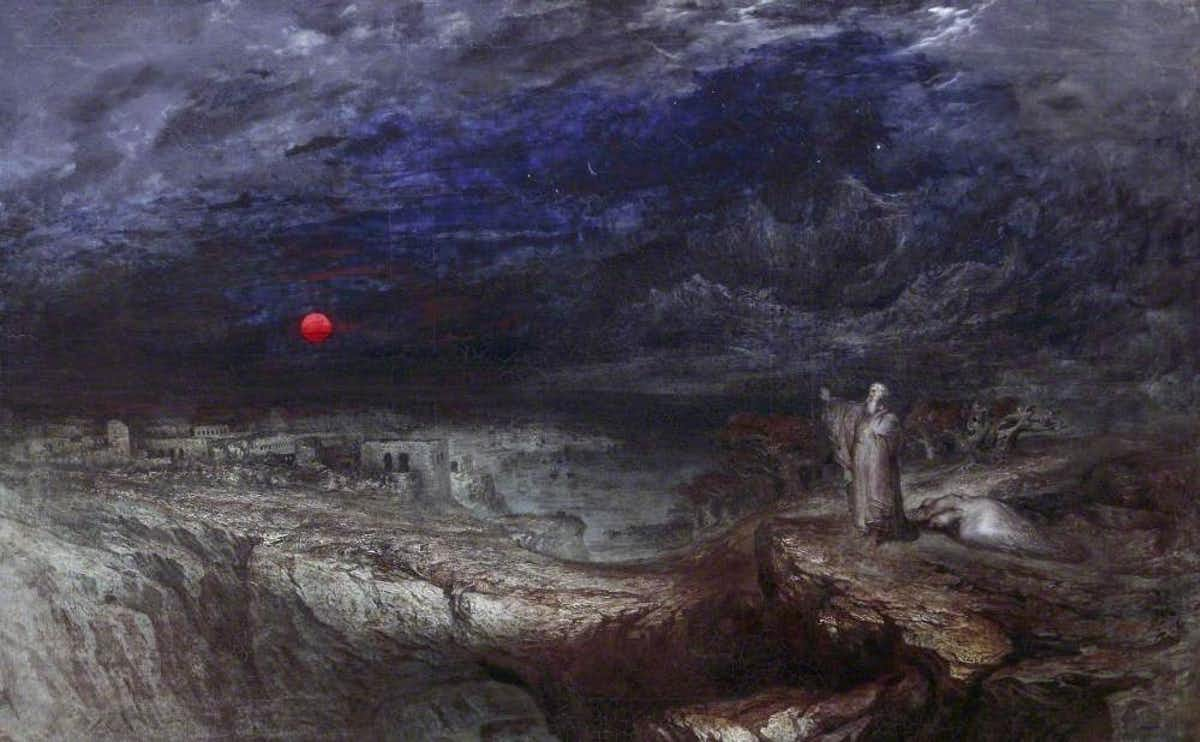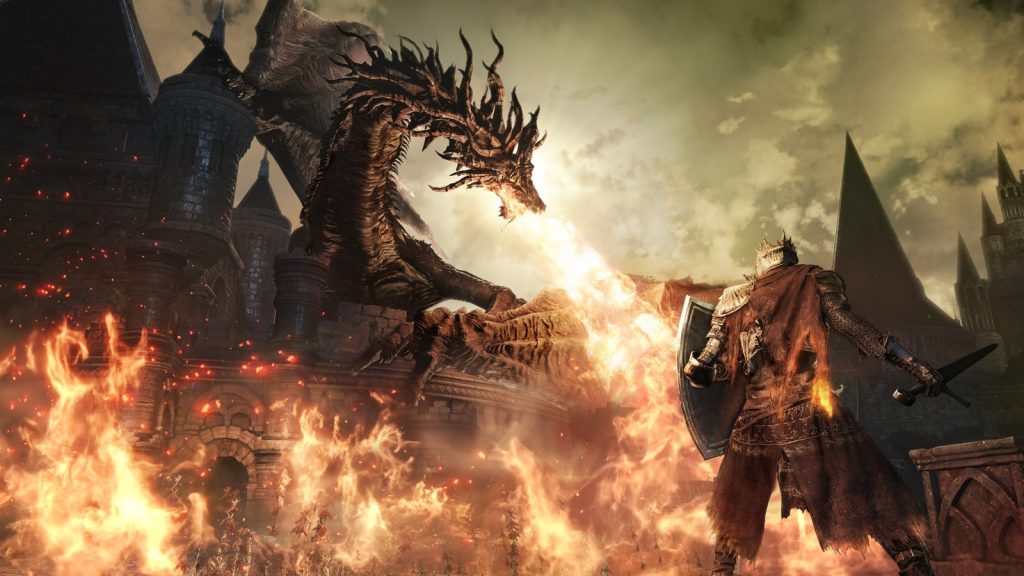September marks the 10th anniversary of “Dark Souls,” one of the most important and influential video games of the last few decades.
The game has generated a large and dedicated online player community and has inspired a new genre of interactive storytelling — the “soulslike.” These games are defined by high difficulty, explorative gameplay and a melancholic atmosphere.
As a fan of “Dark Souls,” I am struck by how it takes up similar themes present in the early 19th-century Romanticist texts that I study for my PhD work in early post-apocalyptic literature.
“Dark Souls,” as well as other soulslike games such as “Mortal Shell,” “Hollow Knight,” and “Salt and Sanctuary” explore apocalyptic themes that were just as popular two centuries ago.
Dying embers
“Dark Souls” takes place in Lordran, a dark-fantasy version of a mythologized medieval Europe. While its grandiose architecture suggests Lordran was once a mighty kingdom, the player’s quest begins at the end of the Age of Fire, when “there are only embers, and man sees not light, but only endless nights.” This trope of the dying Earth is demonstrated in the sluggish, exhausted movement of many of the enemies and is reflected in the fragility of the onscreen character controlled by the player.
An early example of this dying Earth trope can be seen in the work of Lord Byron, a major figure in British Romanticism.
In his 1816 poem “Darkness,” Byron imagines an Earth beneath an extinguished sun. The last denizens of the planet huddle for warmth around forests and dwellings “burnt for beacons,” and the final two survivors meet in a bitter encounter “beside the dying embers of an altar-place.” This use of fire as refuge prefigures the use of bonfires in “Dark Souls” as rare safe havens within an otherwise menacing world.
‘The Last Man’
Byron’s poem was one of many works by British Romantic authors and artists to capitalize on the popularity of French author Jean-Baptiste Cousin de Grainville’s novel Le Dernier Homme (The Last Man).
Grainville’s “last man” character witnesses the slow decline and final end of the world. The novel is, as scholars have recognized, a literary expression of the social and ecological anxieties of the time. It also significantly influenced the development of science fiction and dystopian literature.
Grainville, a priest who was disgraced during the French Revolution, died before his only novel could be published in 1805. When the book was translated to English and published in England in 1806, Grainville was not credited as the author. Despite this, Grainville’s vision of an exhausted Earth that “bore the sad features of decay” influenced British Romantics such as Byron.
Grainville’s novel depicts a central figure that is eerily similar to one in “Dark Souls.” In The Last Man, the Spirit of the Earth is depicted as a humanoid character residing in a cavern among “millions of furnaces,” where he “maintained perpetual fires for the heat that held back the deadly cold.” In “Dark Souls,” Lord Gwyn sits within the Kiln of the First Flame, wherein he desperately tries to keep the world’s embers glowing awhile longer.
In both The Last Man and “Dark Souls,” the world is not a stable certainty but is instead a precarious and fragile thing.

Crumbling ruins
A declining kingdom leaves behind haunted ruins and decaying monuments. Players tread through and among such remains in “Dark Souls.”
The architecture of the game’s setting is inspired by real-world historical styles, including classical Roman and medieval Gothic architecture, and these influences lend to the surroundings a sense of times long past.
An obsession with ruins and ancient structures was prevalent too in the late 18th and early 19th centuries. Similar to the ways in which early gothic British writers gravitated towards narratives set in spooky medieval castles, an obsession with ruins and ancient structures was prevalent too in the work of the British Romantic writers.
In “Ozymandias,” Percy Shelley writes of a shattered monument in the desert, a “colossal Wreck” around which “the lone and level sands stretch far away.” In “The Fall of Hyperion — A Dream,” John Keats describes being transported in a dream to an “eternal domed monument” in which artifacts lie “in a mingled heap confused.”
In Mary Shelley’s dystopian novel The Last Man (one of the many books, poems, paintings and plays to sport the same name following Grainville’s novel), she portrays the final specimen of humanity wandering alone through the “ruins of Rome.”
Readers of the Romantic period could not get enough of ancient ruins — much like gamers who routinely play “Dark Souls” and other soulslike games.
Uncertain times
A question remains: Why would such apocalyptic themes prove to be so popular in two very different historical time periods? Put simply, we share with the Romantic period a world of uncertainty.
Europe in the late 18th and early 19th centuries saw dramatic changes: the French Revolution upended the political status quo, while new discoveries in geology and paleontology made the notion of species extinction difficult to deny and disturbed the prevailing view of a relatively stable natural world.
We too face destabilizing forces today, from climate change to global pandemics to economic anxiety to rising political polarization. Such instability is certain to inspire images of declining empires and dying worlds.
But ruins and remnants do more than imply the end. They also remind us of that which once lived, just as a tomb is both “a container of the dead, and an affirmation and symbol of life.” Ruins persist and, as Mary Shelley’s last man insists, affirm the “human form divine.”
Perhaps this is why a fascination with ancient ruins tends to accompany anxieties of dramatic societal change and ecological precarity.
Regardless, “Dark Souls” stands among the works of Byron, Grainville, Keats and the Shelleys as a masterful artistic expression of our fascination with ruin in its dual meaning: both as disastrous end and surviving remnant.
- is a PhD Candidate of English, Dalhousie University, Dalhousie University
- This article first appeared on The Conversation

